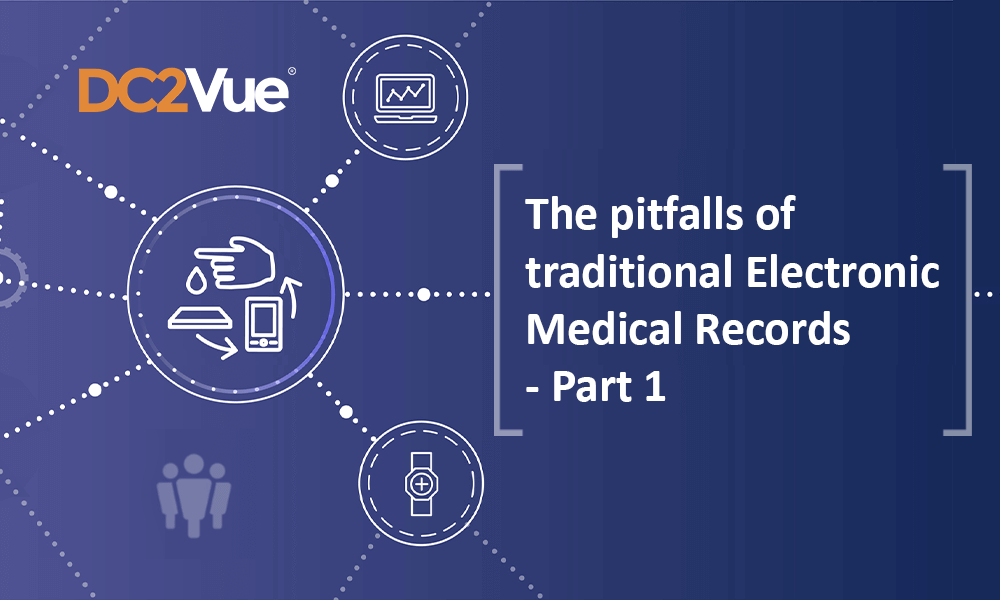The use of Electronic Medical Records (EMRs) across the healthcare sector is growing as technology becomes more integrated into our daily lives. However, it’s no secret that many physicians are dissatisfied with their electronic medical records (EMRs).
Electronic Medical Records (EMRs) are designed to maintain a digital record of a patient’s medical history to achieve centralised, secure, and accessible care. As a result, detailed patient records and improved health outcomes are produced. However, research indicates that this is not (yet) the case.
Many physicians find it wastes hours of time navigating and clicking through multiple screens to create the reports for records they should submit.
They claim they spend too much time entering data and not enough time with patients. They also claim that their electronic records are unhandy, poorly designed, difficult to navigate, and packed with unnecessary detail cut and pasted by co-workers to meet documentation requirements. Plus, the information they require is nearly impossible to find.
EMR is just a system of records
Traditional Electronic Medical Records (EMRs) mostly acts as an electronic typist and appointment scheduler -at its finest electronic data storage hub to replace paper. Even though many primary care physicians and hospitals have moved to Electronic Medical Records (EMRs), this has not resulted in the predicted improvements in data storage and security.
Currently, health care staff are dealing with a wide range of problems with their systems. Number one is the lack of interoperability.
Traditional Electronic Medical Records (EMRs) is quite like a CRM (Customer Relationship Management) system. A CRM provides a centralized location to store customer and prospect data, manage customer interactions, and share information. However, no CRM is effective unless it seamlessly integrated with other marketing, sales, and product development departments.
Interoperability refers to the capacity of systems to communicate with one another. This is highly essential in health care, as it is critical for hospitals, pathology labs, clinics, family physicians, and other health care professionals to have systems that communicate with one another to create a detailed medical record for their patients. This, however, is not the case with Electronic Medical Records (EMRs).
Many systems lack interoperability with the information systems of other practices, diagnostic testing facilities, hospitals, and community facilities, thus leaving professionals to rely on scanning paper documents into the Electronic Medical Record (EMR) as PDF files. Yet, there is no way to search these documents electronically, making it difficult to query a patient list or to efficiently track a patient’s data.
The ability to conjoin and coordinate different medical records of Electronic Medical Record (EMR) is poor, unlinked, and dysfunctional. This makes it challenging for health care professionals to make sense of the records they have at hand and, in the worst-case scenario, to get the full picture of the situation to deliver effective patient care.
Most systems do not communicate with one another, and software vendors are unwilling to collaborate to build bridges, thus leaving health care providers with fragmented systems. On the other hand, working with traditional systems is time-consuming and demands an unimaginable amount of time from health care professionals’ day, to enter data into a computer which could be better spent on diagnostics and educating patients.
EMRs are often purchased, then applied to a problem.
Many get excited to embrace the digital transformation in their health care practicians and purchase an electronic medical record with the eagerness to change to the digital. When considering the benefits, Electronic Medical Records (EMRs) advertise such as help with more effectively diagnose patients, reduce medical errors, and deliver safer care and improved patient and provider interaction and communication, Health care providers are not to blame for jumping on the trend. But an Electronic Medical Record (EMR) has failed to deliver as advertised.
In most cases, the decision is made without considering if an Electronic Medical Record (EMR) is the right choice to overcome the challenges the health care provider is experiencing. Then they attempt to apply the system to the problems they have and end up being exhausted and with a ‘solution’ that is way complicated than the problem itself. – As many of the physicians’ problems go way beyond being their records on paper.
It’s becoming clearer and clearer today that an Electronic Medical Record (EMR) is just a solution seeking a problem- meaning an idea that was hatched but seems not to a useful application at its current capacity to perform.
The abundance of unstructured data EMRs.
Without an argument do a great job in storing data, however, extracting and access useful information quickly and effectively has been a challenge that has left many users in frustration.
Electronic Medical Records (EMRs) are not congruent in terms of the workflow. It often distracts and disrupts physicians when they view charts in front of patients and click between pages to locate the records needed.
Many of the things that physicians, patients, and policymakers value, such as better care experiences, lower costs, enhanced quality in inpatient care, are not supported by current Electronic Medical Records (EMRs). They were not designed to help doctors become better diagnosticians or more cost-effective prescribers. Thus, information overload is often experienced by practitioners which complicate their efforts to discern key clinical information, which is a huge issue in care coordination.
Traditional Electronic Medical Records (EMRs) are only driven by documentation needs in the health record management and billing and fail to fulfil requirements of patient and providers around clinical management – thus enabling reactive care than proactive care.
Obviously, there is a problem with traditional Electronic Medical Records (EMRs), yet returning to paper records is not a wise decision in today’s digital world. Therefore, health care professionals need to look for a better digital alternative immediately.



